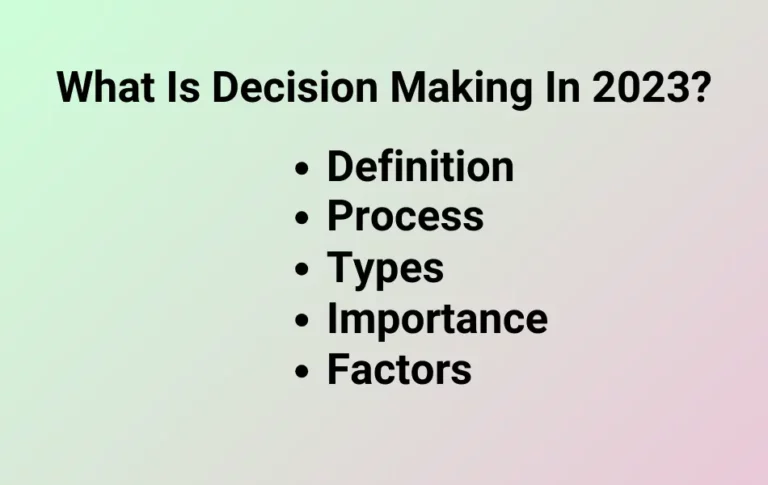3 Decision Making Conditions: Certainty, Risk, Uncertainty – Full Explained
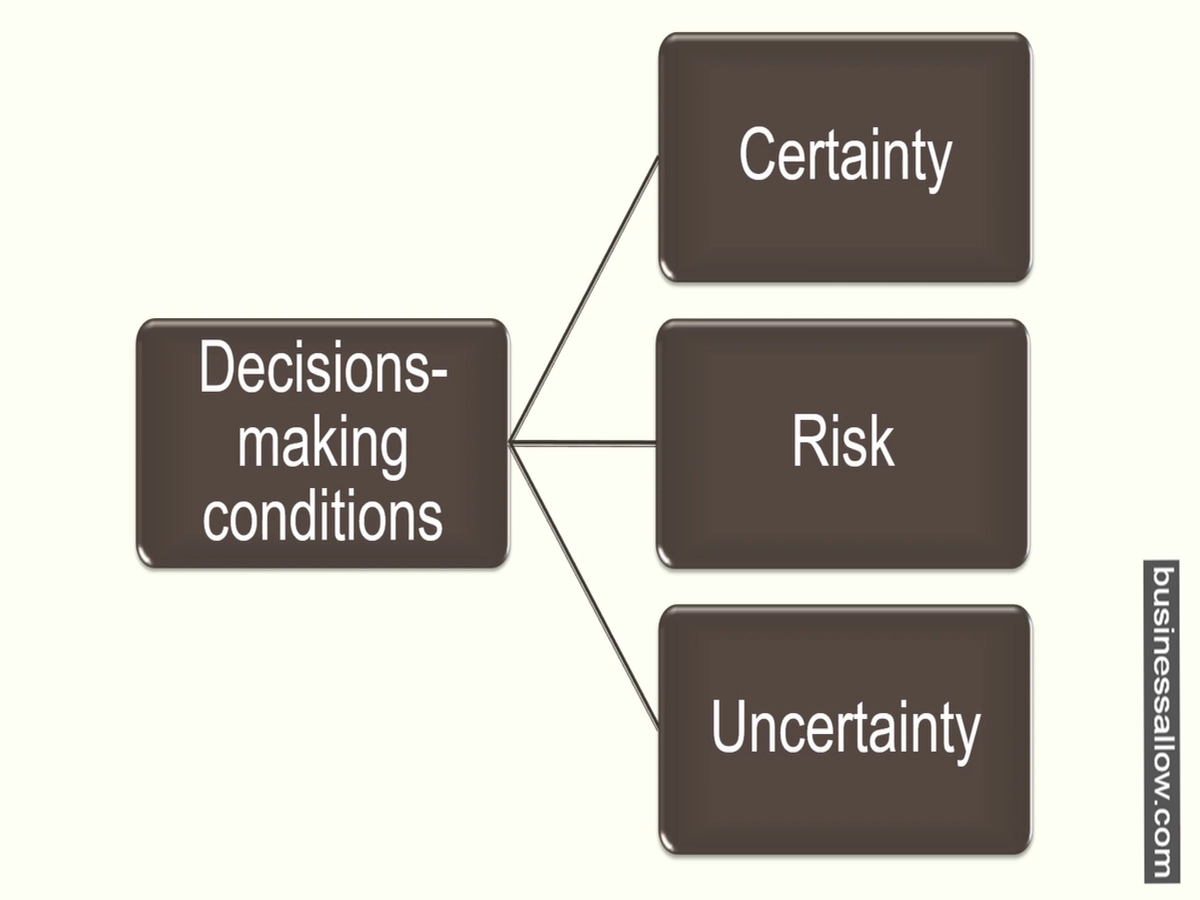
The decision making conditions can be thought of as the unique environments or circumstances in which decisions are made.
These decision making conditions fall into three categories: certainty, risk, and uncertainty. Each situation presents its own set of challenges and opportunities, requiring managers and leaders to adapt their decision making approaches accordingly.
In this exploration, we’ll delve into these conditions, providing clarity on how they shape decision-making processes and why they matter in the realm of management.
Content Outline
3 Decision Making Conditions – Explained 2024
1. Certainty:
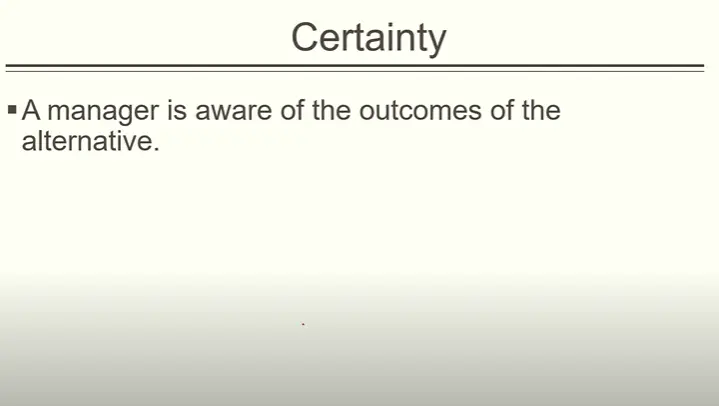
Think about certainty in decision making, like knowing precisely what’s in your lunchbox when you open it. In an organization, certainty means you have all the information you need, and the path ahead is clear, just like knowing your lunch is a peanut butter and jelly sandwich because you made it yourself.
For instance, imagine an office manager ordering office supplies. They know precisely what the team needs and have a budget to follow. It’s like shopping for groceries when you have a list and know the prices – no surprises!
2. Risk:
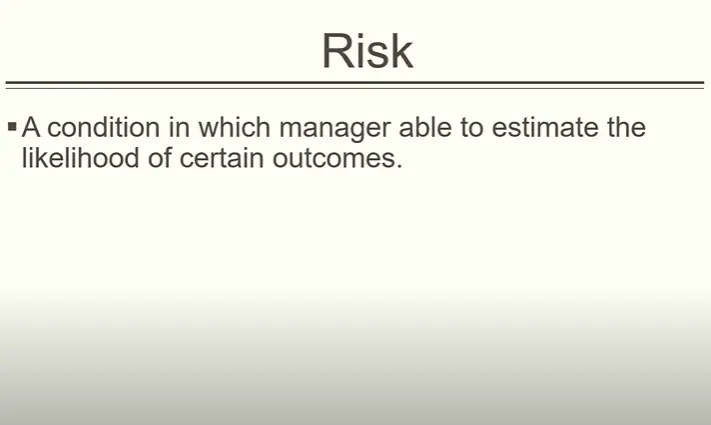
Now, let’s talk about risk. It’s like planning a picnic, but you’re unsure about the weather this time. You might check the forecast, but there’s still a chance of rain. Risk means you have some information in organizational decision-making, but there are uncertainties or potential challenges.
Consider a company launching a new product. They’ve done market research but need to determine how customers will react. It’s like bringing an umbrella on the picnic – you’re prepared for things not going as planned.
3. Uncertainty:
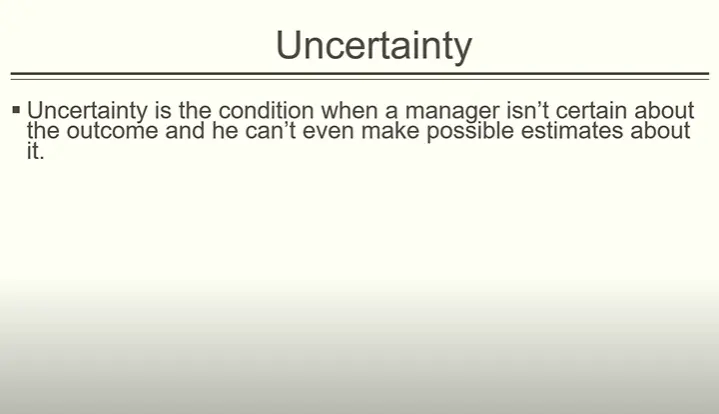
Uncertainty is like organizing a surprise party without knowing if the guest of honor will like the theme. In organizational decision-making, uncertainty means you’re making choices without all the facts or when things are unpredictable.
Imagine a start-up deciding to enter a new market without previous experience. They need to find out how the local customers will respond, and they face a lot of unknowns. It’s like embarking on an adventure without a map – you’re taking a leap of faith.
So, in organizational decision making, sometimes you have all the answers (certainty), sometimes you’re ready for unexpected twists (risk), and other times, you’re navigating uncharted territory (uncertainty). It’s like steering a ship through different waters to reach your destination!
Factors Influencing Decision Making Conditions
1. Personal Factors
Imagine you’re the CEO of a company, and you have to decide whether to invest in a new technology. Your personal factors, like instincts, emotions, and past experiences, play a role:
- Instincts: Just like your gut tells you not to walk down a dark alley, your business instincts might tell you to be cautious about a risky investment.
- Emotions: Suppose your company had a big success, and you feel confident and happy. This emotional state might influence your decision to invest in the technology because you’re in a positive mood.
- Past Experiences: If your previous experiences with similar technology investments were successful, you’re more likely to make a similar decision in this case.
2. Environmental Factors:
Now, think of your organization as a tree rooted in its environment:
- Cultural Factors: Your company operates in different countries, each with its business customs. Understanding these cultural factors helps you decide how to approach international partnerships or marketing strategies.
- Social Factors: If your industry is heavily influenced by social trends, like sustainability becoming a big deal, you might decide to develop eco-friendly products to align with these trends.
- Economic Factors: Economic conditions like a recession can impact your decision to expand or cut costs. You might decide to postpone expansion plans due to economic uncertainty.
3. Technical Factors:
In your organizational decision-making toolbox:
- Data Availability: Imagine you’re in charge of inventory management. You use data from sales and production to decide how much stock to order. The availability of accurate data influences your decisions, just like checking the weather app for information.
- Information Overload: Sometimes, you have so much data that it becomes overwhelming. Receive tons of customer feedback and market research. It might take time to decide what product changes to prioritize. More information can make decisions easier.
So, in organizational decision making, it’s not just random choices; it’s like performing a magic trick where personal feelings, the environment, and the information you have all come into play. It’s like being the captain of a ship, considering your own compass, the changing weather, and your navigational tools to chart the right course for your organization!
Related: Types of decision making
Techniques To Improve Decision Making Conditions
- Decision Trees
Imagine you’re a manager trying to choose the best marketing strategy for a new product launch. You create a decision tree to visualize the options, like social media or traditional advertising. Each path leads to different outcomes, helping you decide the most effective strategy.
- Scenario Planning
Picture a company planning for different economic situations. They consider scenarios like a strong economy, a recession, or a sudden market shift. By preparing for each possibility, they can make decisions that will work well no matter what happens.
- SWOT Analysis
Think of a manager evaluating a potential merger. They assess the strengths (like a solid customer base), weaknesses (such as a struggling department), opportunities (like entering new markets), and threats (such as regulatory changes). This analysis guides their decision on whether to proceed with the merger.
- Intuition vs. Data-Driven Decisions
Imagine a project manager deciding whether to extend a project deadline. They have a gut feeling that the team needs more time (intuition), but they also look at data like project progress and team workload (data-driven). Balancing both helps them make wise decisions, like deciding when to take an umbrella based on intuition and the weather forecast.
Related: decision making approaches
Sum Up
In conclusion, it’s crucial to grasp the decision making conditions: certainty, risk, and uncertainty. These factors define how we make choices in management. By recognizing and managing these conditions effectively, decision makers can make better-informed decisions. It’s like having a map to navigate the complex decision-making world, helping organizations make strategic choices that lead to success in today’s ever-changing business environment.

